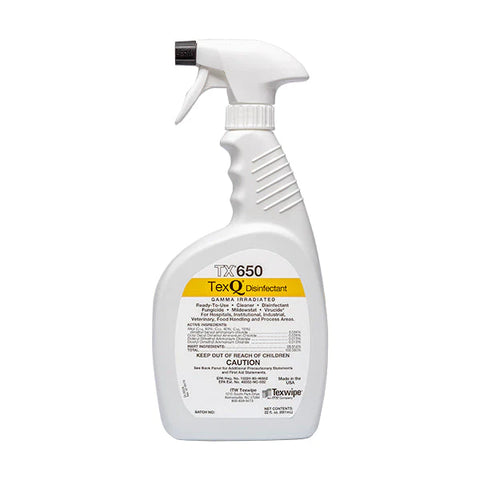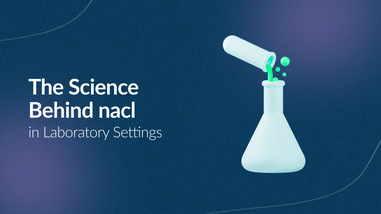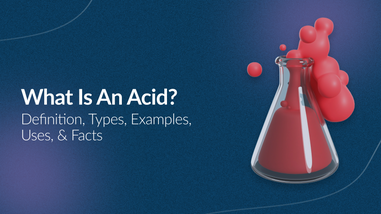- No products in the cart.
Cleanrooms are controlled environments that require stringent hygiene protocols to maintain a contamination-free atmosphere. Whether in the pharmaceutical, electronics, medical device manufacturing, or biotechnology industries, the choice of disinfectants plays a crucial role in ensuring a sterile environment. This blog explores the various types of cleanroom disinfectants available to meet diverse needs and maintain the highest standards of cleanliness.
-
Alcohol-Based Disinfectants
Alcohol-based disinfectants, commonly containing isopropyl alcohol or ethanol, are widely used for their rapid evaporation and effective broad-spectrum antimicrobial properties. They are suitable for use on surfaces, equipment, and hands. These disinfectants quickly kill microorganisms by denaturing their proteins and disrupting cell membranes. However, they can be flammable and may not be compatible with certain materials like plastics and electronics.
-
Quaternary Ammonium Compounds (Quats)
Quats are cationic surfactants with excellent disinfecting properties. They are effective against a wide range of bacteria, viruses, and fungi. Quats have residual antimicrobial activity, meaning they continue to work after application, providing extended protection. However, their efficacy can be reduced in the presence of organic material, and they may cause surface buildup over time.
-
Hydrogen Peroxide-Based Disinfectants
Hydrogen peroxide-based disinfectants are known for their strong oxidizing properties, making them effective against spores, bacteria, viruses, and fungi. They break down into water and oxygen, leaving minimal residue. These disinfectants are often used in vaporized or aerosolized forms for whole-room decontamination. It's important to note that they can have a bleaching effect on materials and may require proper ventilation during application.
-
Chlorine-Based Disinfectants
Chlorine-based disinfectants, including sodium hypochlorite (bleach), are powerful antimicrobial agents effective against a wide array of pathogens. They are readily available, cost-effective, and simple to use. However, they can corrode metals and have a strong odor. Proper dilution is crucial to avoid damage and ensure safety when using these disinfectants.
-
Iodine-Based Disinfectants
Iodine-based disinfectants, like povidone-iodine, are known for their broad-spectrum activity against bacteria, viruses, and fungi. They are often used for pre-operative skin preparation and wound care in healthcare settings. While effective, they can cause skin irritation and may stain surfaces or fabrics.
-
Phenolic Compounds
Phenolic compounds have a long history of use as disinfectants. They are effective against a range of microorganisms and have a residual effect. Phenolics are often used in healthcare facilities and laboratories. However, they can be corrosive to metals and may not be suitable for use in environments with sensitive electronic equipment.
-
Silver-Based Disinfectants
Silver has antimicrobial properties, and silver-based disinfectants release silver ions that can inhibit microbial growth. These disinfectants are often used in medical devices and wound care products. While they are effective, concerns about potential toxicity and the development of silver-resistant microorganisms have been raised.
-
Enzymatic Cleaners
Enzymatic cleaners work by breaking down organic matter, such as proteins and fats, on surfaces. While not traditional disinfectants, they play a crucial role in pre-cleaning surfaces before the application of disinfectants. Enzymatic cleaners are especially useful in removing biofilms, which can shelter microorganisms from disinfectants.

When choosing a disinfectant for your cleanroom, it is important to consider the following factors:
- The types of microorganisms you need to kill
- The materials that the disinfectant can be used on
- The odor of the disinfectant
- The cost of the disinfectant
- The ease of use of the disinfectant
It is also important to follow the manufacturer's instructions carefully when using any disinfectant. This will help to ensure that the disinfectant is used safely and effectively.
Here are some additional tips for using disinfectants in cleanrooms:
- Always wear personal protective equipment (PPE) when handling disinfectants.
- Always dilute disinfectants according to the manufacturer's instructions.
- Do not mix different types of disinfectants.
- Dispose of used disinfectants properly.
- Monitor the effectiveness of the disinfectant by conducting regular microbial testing.
Conclusion
In the world of cleanrooms, maintaining a sterile environment is paramount. The choice of disinfectant depends on the specific needs of the industry and the materials and equipment used. From alcohol-based disinfectants for rapid surface disinfection to hydrogen peroxide-based options for whole-room decontamination, each type of disinfectant has its strengths and limitations. It's crucial to select the appropriate disinfectant, considering factors such as compatibility with materials, efficacy against target microorganisms, and potential health and safety risks.
For over 40 years, Lab Pro Inc. has been committed to delivering highest quality lab chemicals, lab supplies, hand tools, lab equipment, reagents, distance learning kits, and cleanroom PPE apparel. Renowned by global medical device companies and laboratories, we ensure exceptional quality in every product. Contact us online or call 888-452-2776 to learn more. Discover top-notch lab supplies and elevate your experiments today!












































